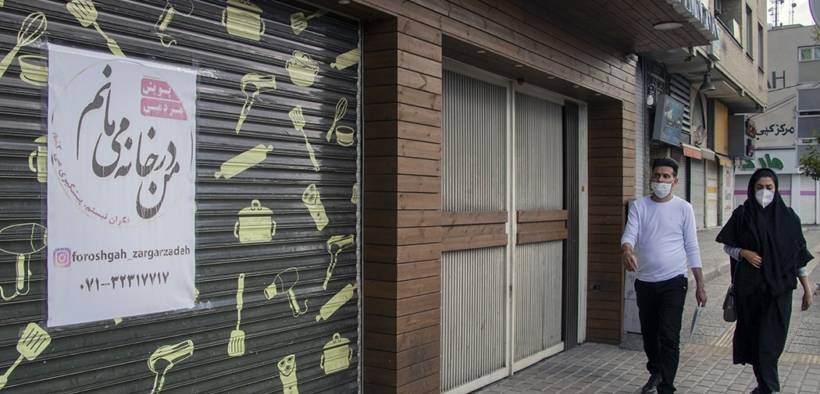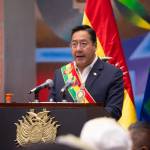US Uses Encrypted App to Solicit Coronavirus Information from Iranians

The US State Department is turning once again to Iranian civilians to obtain information from within the state.
The US State Department is turning once again to Iranian civilians to obtain information from within the state. In November, Secretary of State Mike Pompeo put out a call via Twitter, asking for evidence that the regime had suppressed protests against Tehran’s leadership. Afterward, Pompeo said his department had received 20,000 messages, photos, and videos, according to the New York Times.
Endearing the Public
Now, Washington is trying to ascertain the full scope of the Covid-19 outbreak in Iran and it has reasons to distrust official reports from Tehran. Officially, Iran said it had more than 16,000 cases with 988 deaths, the New York Times reported. Washington is looking to capitalize on the alleged misinformation to endear itself with Iranian civilians. By giving them the truth, the Trump administration hopes they may turn on the President Hassan Rouhani and perhaps even Ayatollah Ali Khamenei.
“The message we are sending is we want your stories and videos. We want to see what is happening and we will share it with you, because the Iranian regime isn’t allowing you to see it yourselves,” said a State Department official.
The State Department’s encrypted Telegram line is once again flooding with what it calls “whistleblowing information.” Originally, the line was established as a method to securely submit tips on terrorist suspects in exchange for cash rewards.
“We have a constant flow of information with thousands of Iranians as a result of setting up this channel,” an administration official said.
The administration also created an online survey for Iranians to send information to Washington. Sent from the State Department’s Farsi account (@USAdarFarsi), the 37-question survey has already generated 7,000 responses over the past three days.
“Please take the time to respond to this anonymous survey and link it to everyone you know in Iran,” the post read in Farsi.
Data scientists filter through the responses by beginning with a verification of the information. Once it determines it is factual, often by crosschecking it with other sources such as NGOs, it quickly makes it way to the top of the chain. Pompeo has already incorporated some of the submissions into his speeches, CNN reported.
“Iran’s Chernobyl”
Even before requesting tipsters to send information, Pompeo was critical of Tehran’s response to Covid-19 based on the details it already understood. The outbreak in Iran is dwarfed only by China, where official reports have indicated it is under control. In Iran, however, 100 people die every day from the new disease, according to the New York Times.
“As @Khamenei_ir (Khamenei) knows, the best biological defense would’ve been to tell the Iranian people the truth about the Wuhan virus when it spread to #Iran from China,” Pompeo wrote on Twitter. “Instead, he kept Mahan Air flights coming and going to the epicenter in China and jailed those who spoke out.”
At the dawn of the outbreak, Rouhani and officials within his government severely bungled their response. Its messaging quickly became conflicting as Khamenei and Rouhani each had their hands on the steering wheel trying to go different directions. The crisis has begged the question, “Who is really in control of Iran?”
By most accounts, Khamenei seems to be the victor in the battle over control of the outbreak. On Thursday, Khaemenei authorized the military to take charge of the government’s response and push aside Rouhani’s government if necessary. The military immediately wanted large-scale quarantines including a complete closure of Tehran, but Rouhani protested.
The economy, already decimated from US sanctions, cannot weather another storm. His health minister announced “business as usual” to prevent more turmoil. Then the military said it would lockdown Tehran and 11 provinces, followed by Rouhani denying the closures.
Eventually, the military did not press the matter, but it didn’t have to as local governments decided to close cities. Khamenei also gave an order to close two holy shrines in Qom and Mashhad, but conservative protestors forced the doors back open. Rouhani’s reluctance to take immediate action allowed the virus to spread to the point that satellite photos revealed mass graves being dug in Qom.
“This is Iran’s Chernobyl,” said a Trump administration official. Washington’s role in it is simply to share the truth, whatever that may be, with the public. It is counting on the people despising Rouhani more than the Trump administration, but in the aftermath, who’s to say they have to choose one or the other?
For it’s part, Washington did offer to help Tehran with Covid-19. The only condition is that Iran must release political prisoners whom Pompeo said are “wrongly detained.” Iranian leadership has turned down the offer.



















